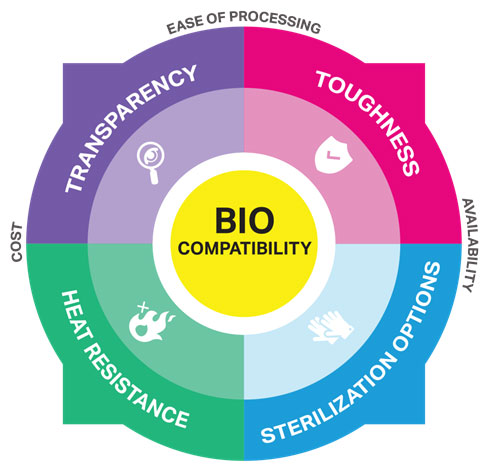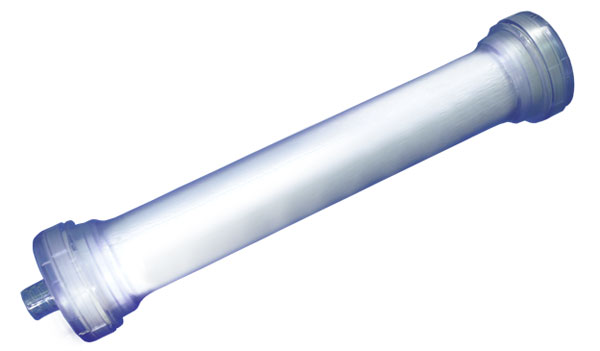|
Material
Selection For Injection Molded Medical Parts
|

Suresh V,
Sr. Manager Market Development, Covestro (India)
Private Limited |
Medical devices are often designed
with complex geometry to meet very high precision
hence injection molding the parts involves high
skills, precision molds and the material that
complements the both. Material selection is very
important for the development of a successful product.
Considerations such as appearance, colour and key
properties like mechanical strength and heat
resistance are vital.
Material selection is very
important for the development of a successful product.
To meet the in-use functional
requirements, considerations such as appearance,
colour and key properties like mechanical strength and
heat resistance are vital for medical applications.
However, there are additional considerations such as
chemical disinfectant compatibility, sterilization
requirements and regulatory fulfillment. |
The other factors that influence the selection of material
includes the ease of processing, local availability and
long term continuation of the
product and the commercial viability (cost of the
material). Medical devices are often designed with complex
geometry to meet very high precision hence injection
molding the part involves high skills, precision molds and
the material that complements the both. At the same time,
frequent change in the material formulation and the
product change or discontinuation will result in the huge
cost of prequalification at the OEM end so it is also
important to make sure that the supplier with long history
and sustainable business model while assuring the
consistency in the pricing and availability of the
material.

An effective selection of plastics raw material for the
medical devices goes through the set of key property
evaluation and selection process. Most of the materials
meet very few of these properties but seldom with a unique
combination of all properties.
Polycarbonate resins and blends have excellent thermal,
mechanical and environmental properties that make them
suitable for a wide variety of medical applications.
Polycarbonate resins are an appropriate choice for medical
parts that require glass-like transparency, while
polycarbonate blends (PC/ABS) are generally opaque. It
also can be pre-coloured to achieve different colours and
special effects to meet the various applications
requirements.
Medical devices usually encompass multiple components. It
is assembled with complex joints / assembly methods and
under goes the sterilization process before delivery.
Hence, the material used to make the components should
support the necessary combination of the properties as
detailed in the pictorial illustration. The safety of the
entire device system (in terms of biocompatibility to
human body) must be proven according to India medical
device rule 2017. The OEM’s regulatory liability is better
managed if the raw material is already assessed to be
biocompatible.
Covestro offers many polycarbonate resins
and blends that have been specially developed to meet the
requirements of medical applications, including Makrolon®
polycarbonate, Apec® high heat polycarbonate, Bayblend®
PC+ABS blends and Makroblend® PC+PBT & PC+ PET blends.
How does Polycarbonate become the
material of choice for the renal care products?
Patients who have lost kidney function and
have been diagnosed with end-stage renal disease often
require external treatment of their blood (hemodialysis)
to remove excess water and toxins.
Hemodialysis is most often accomplished by
passing the patient’s blood through a semi permeable
membrane cartridge. Filter cartridges engineered from
polycarbonate provide a rigid housing that supports and
protects the fragile hemodialysis membrane.
The polycarbonate material resists
shattering during manufacture, shipping and during the
clinical use.Its thermal stability allows for single-pass
steam sterilization or processing via EtO or irradiation
(both gamma and electron-beam). In the process, clarity of
the housing is vital, enabling the dialysis technician to
observe the procedure.
Product : Hemo-dialyzer housing
Material : Makrolon® Rx2440

Advantage :
-
Biocompatible according to ISO10993-1 and
USP Class VI
-
Rigid yet tough
-
Dimensional Stability
-
Glass like transparent,
-
Steam, EtO, Gamma and eBeamsterializable
|
